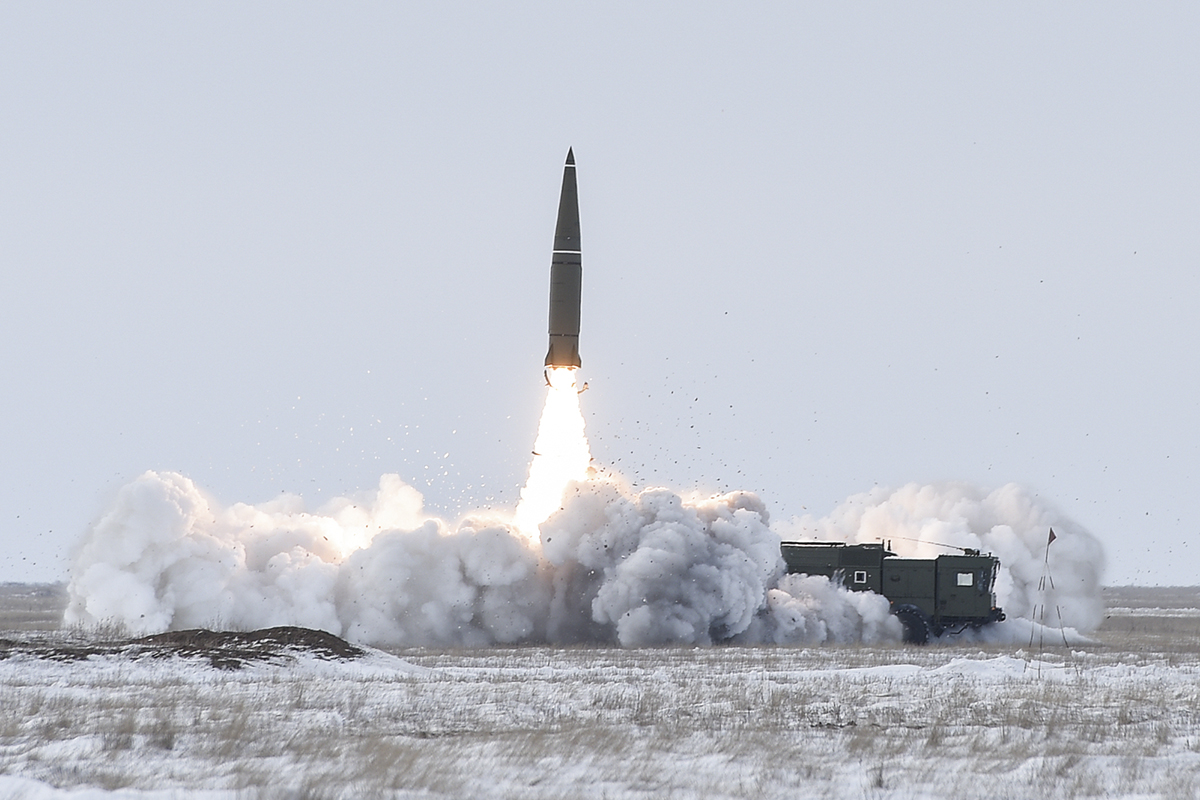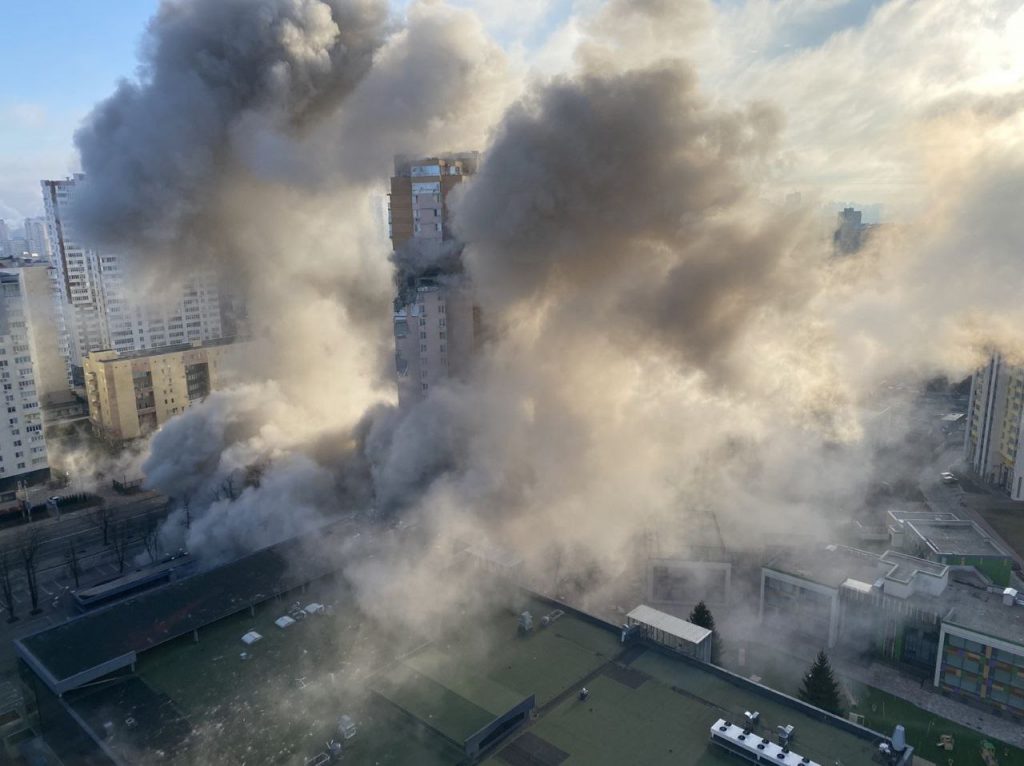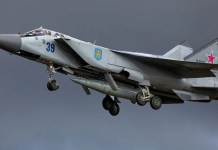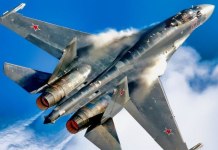Russia retains the right to use nuclear weapons if the country is “provoked” by NATO, Moscow’s Deputy Ambassador to the UN told Sky News on March 24.
“If Russia is provoked by NATO, if Russia is attacked by NATO, why not, we are a nuclear power”, said Dmitry Polyanskiy when asked if President Putin was right to hold the prospect of nuclear war over the rest of the world.
The senior Russian Diplomat made these remarks after Kremlin’s chief spokesman Dmitry Peskov said in an interview with CNN that Putin would use nuclear weapons if there is an existential threat to Russia.
“It’s not the right thing to threaten Russia and to try to interfere. So when you’re dealing with a nuclear power, of course, you have to calculate all the possible outcomes of your behavior,” Polyanskiy further said.
In late February, Putin in a televised meeting with top Russian defense officials instructed them to place the Russian Nuclear forces on high alert in the backdrop of “aggressive comments” made by “top officials in leading NATO countries” about Russia.

The US Secretary of State Antony Blinken condemned the move as “provocative” and “the height of irresponsibility.”
The US and its European allies believe that their supply of weapons to Ukraine has enabled Kyiv to pose a stiff resistance against invading Russian armed forces and that Putin may resort to the nuclear option due to his frustration over the heavy losses of the Russian military equipment and depleting capacity to renew them.
Strategic And Tactical Nukes
According to experts, the risk in Ukraine is not the use of giant “strategic” nuclear weapons, but “tactical” nuclear weapons with smaller warheads that will cause localized devastation.
The strategic nuclear weapons are used to break the enemy’s will by destroying its capacity to wage a war by targeting strategic assets such as important cities where a country’s top leadership is based or key manufacturing locations, sources of raw materials, stockpiles, transportation, and communication systems, etc.

Whereas, tactical nuclear weapons are deployed to make swift battlefield gains against opposing forces and therefore they are limited to the area of military operations.
The two weapon types also differ in terms of delivery systems. The strategic weapons are delivered using long-range missiles whereas tactical ones are deployed using shorter-range delivery systems such as artillery, short-range ballistic missiles, cruise missiles or aircraft.
The side of the nuclear warheads of these tactical weapons can range anywhere between 1 kiloton or less – equivalent to a thousand tonnes of the explosive TNT – and 100 kilotons.
Russia can use tactical nukes to blow deep and wide holes in Ukraine’s defenses by destroying key targets such as airfields or key staging areas.
Also, it may be difficult for the US or NATO to even detect the preparations on the Russian side for a nuclear attack because many of the weapon systems being used by Russian forces in Ukraine such as land-based Iskander missile, ship or submarine-launched Kalibr cruise missiles or even the conventional artillery systems such as the “Malka” self-propelled gun are “dual-capable”, which means they can deliver conventional and nuclear weapons.

There are varying estimates of Russia’s arsenal of tactical nuclear warheads. A most recent estimate by experts from the Federation of American Scientists (FAS) suggests that Moscow has approximately 1,912 tactical nuclear warheads assigned for delivery by air, naval, ground.
Out of these, authors calculate the Russian Navy maintains about 935 warheads, while the Air Force may have roughly 500 and the Army may have 70 warheads for short-range missiles and artillery, along with, possibly, some additional warheads for the dual-capable 9M729 intermediate-range missile.
Also, some 380 warheads may have been allocated to Russia’s air and missile defense forces.
How Serious Is The Threat?
That said, the questions remain whether President Putin would really resort to the use of nuclear weapons in Ukraine.
US intelligence says Russia has a theory called “escalate to de-escalate“, which involves doing something dramatic like using a tactical weapon on the battlefield or as a demonstration somewhere; or simply threatening to do so, thereby frightening the other side into backing down.
In June 2020, Russia released a document outlining the State Policy on the use of nuclear weapons. It notes that “in the event of a military conflict, this Policy provides for the prevention of an escalation of military actions and their termination on conditions that are acceptable for the Russian Federation and/or its allies”.

Pavel Luzin, an expert at the Russia-focused think-tank Riddle, suggested that a tactical weapon will be first used over the sea or an uninhabited area, as an act of intimidation.
“After that, if the adversary still wants to fight, it may be used against the adversary in a direct way,” Luzin said.
Some experts think this is just alarmism as the use of nuclear weapons would lose Russia even the little political support it has globally from countries such as India and China. Ven Bruusgaard of the University of Oslo suggested that Putin’s concern about his own place in history might deter him.
- Written by Tanmay Kadam/EurAsian Times Desk
- Contact the author at etdesk@eurasiantimes.com
- Follow EurAsian Times on Google News





